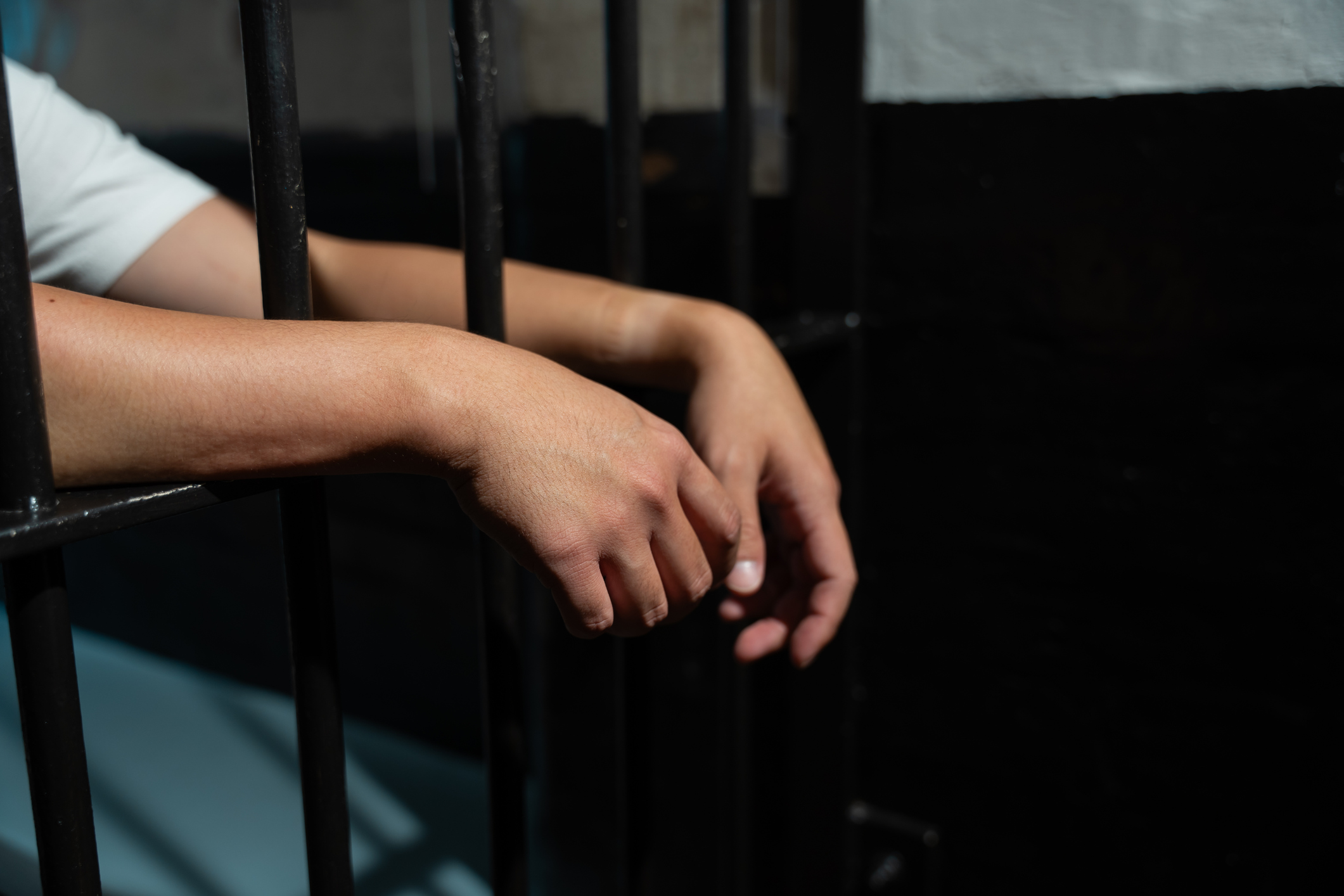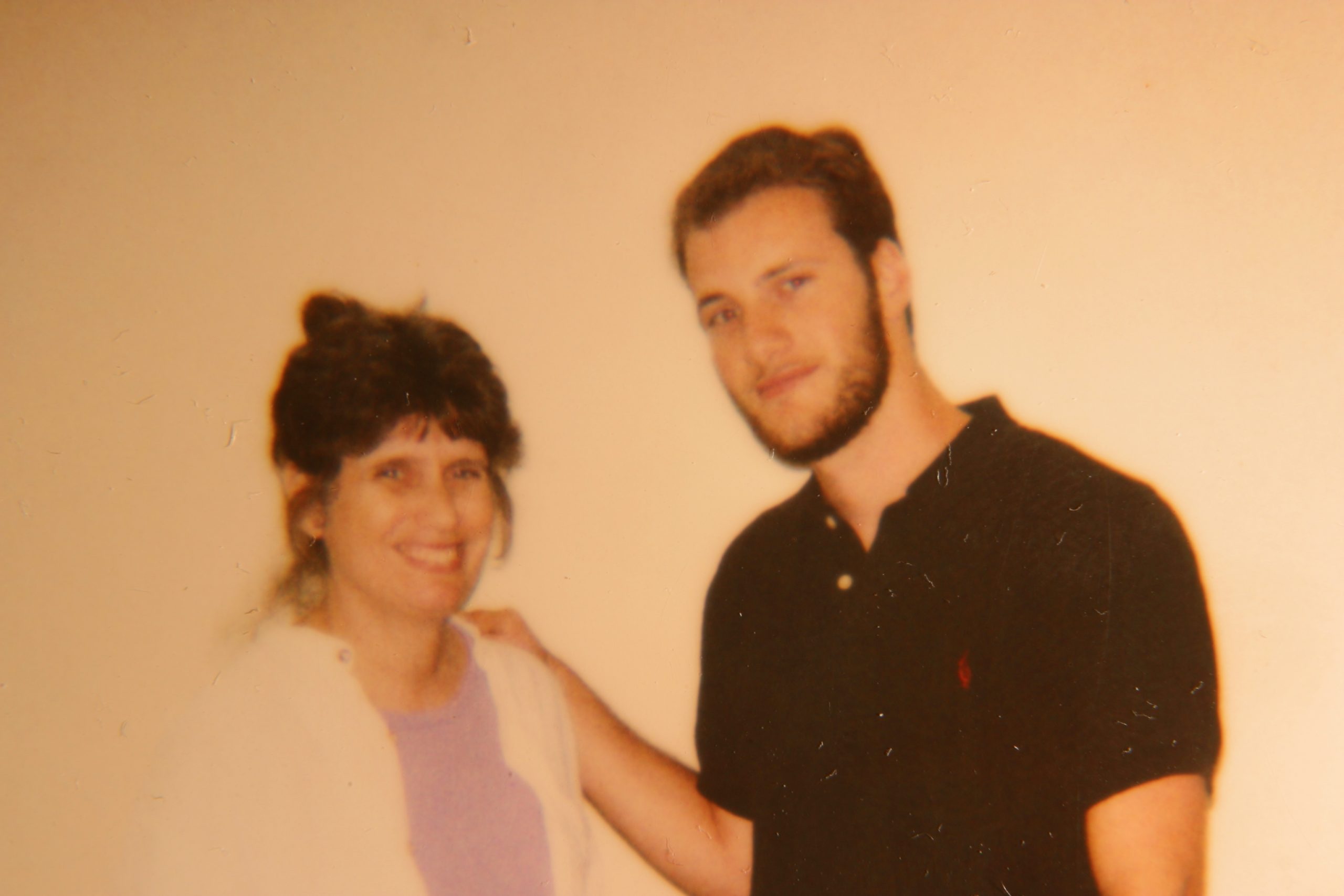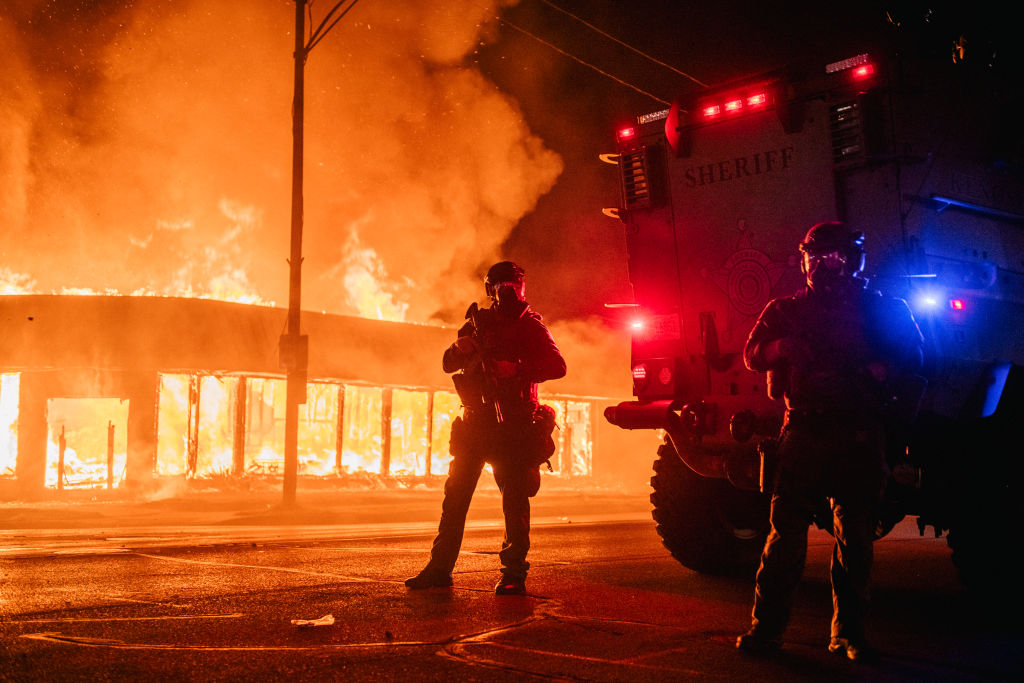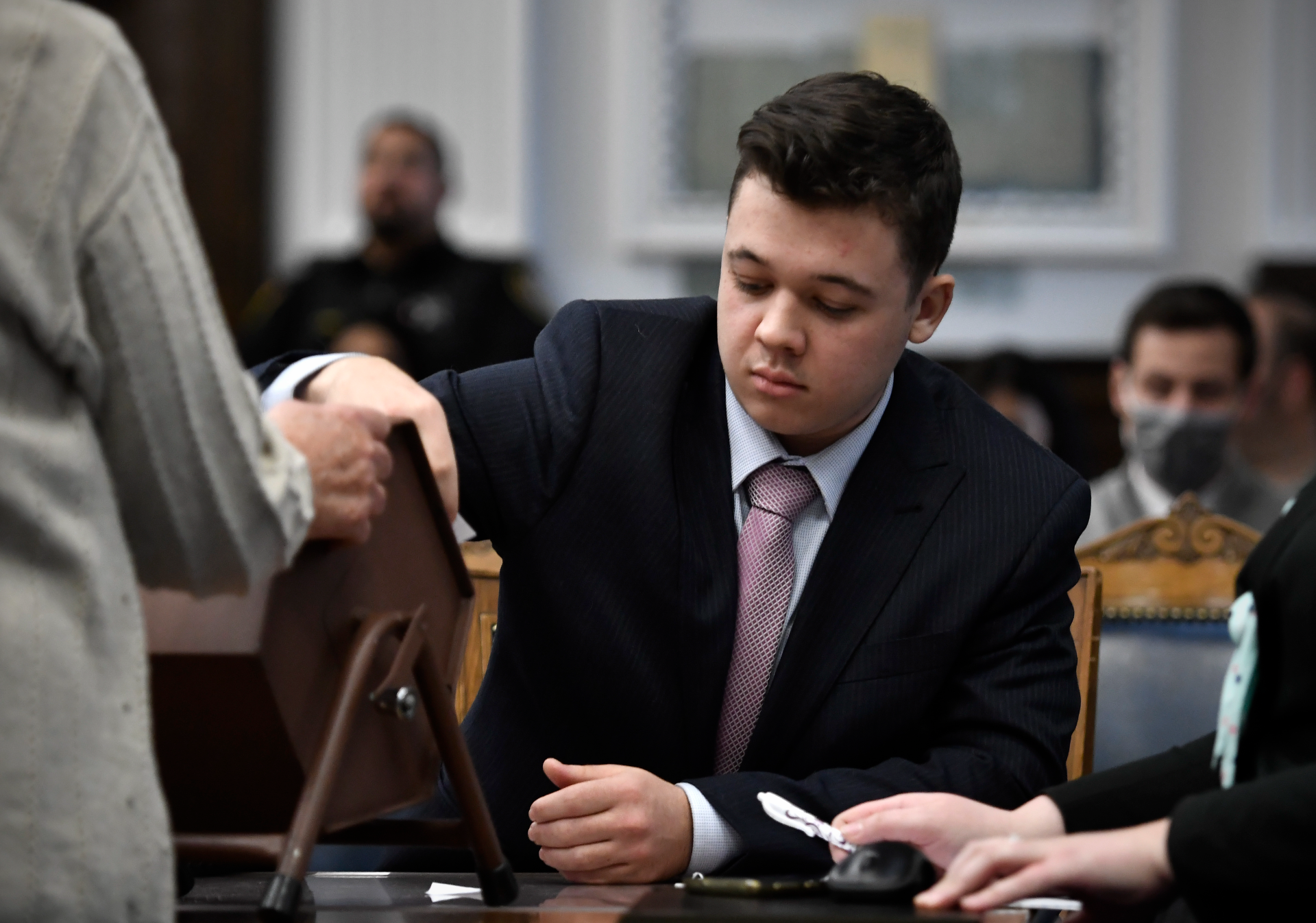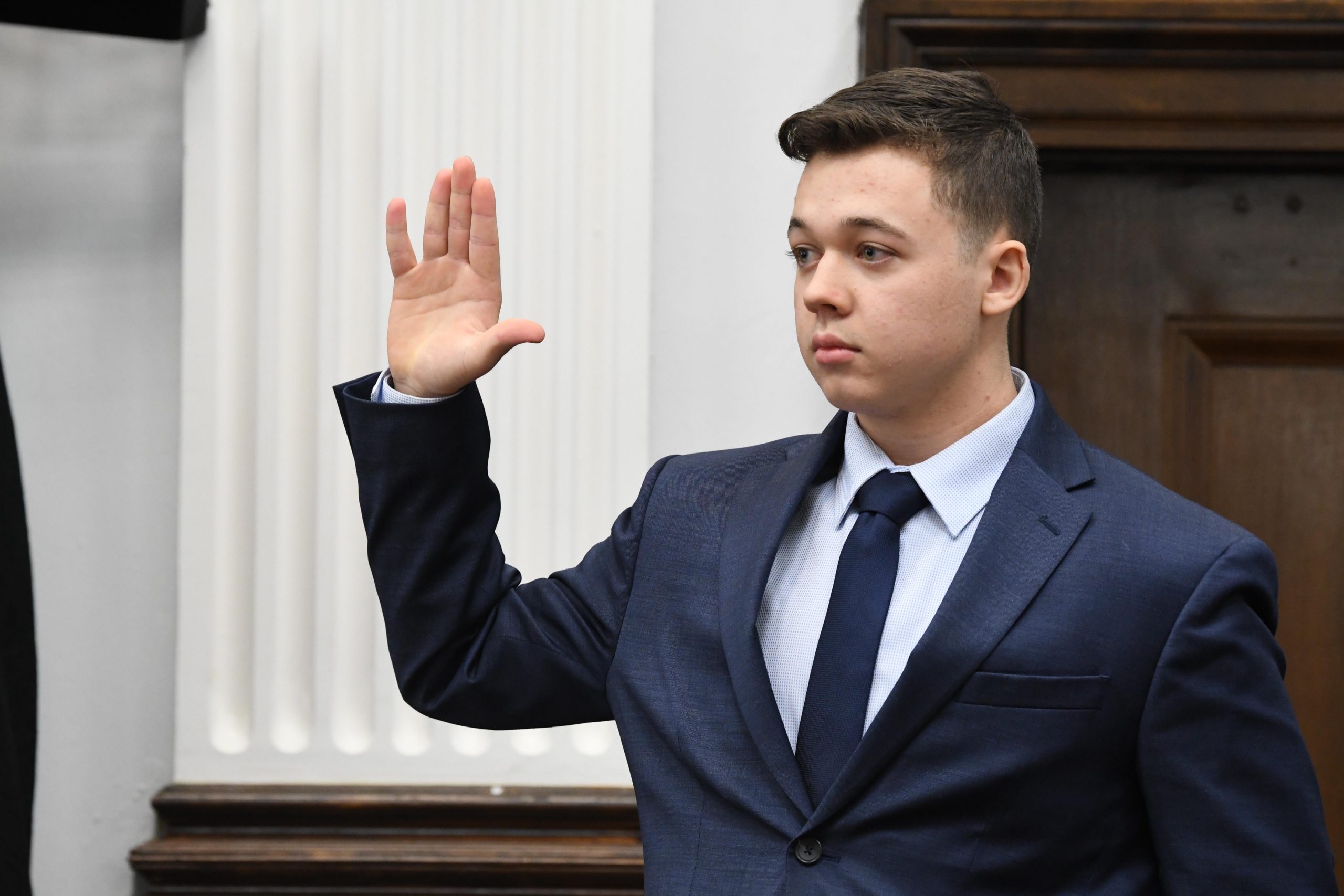Our emotional involvement in remote tragedies is exhausting and pointless.
State of Emergency

El Salvador shows us our future.
Just over a week ago, the President of El Salvador, Nayib Bukele, released a tweet that immediately generated a huge buzz across Twitter and spawned much comment in the traditional news media. The tweet was not about Bitcoin.
“Today at dawn,” President Bukele tweeted, “in just a single operation, we transferred the first 2,000 gang members to the Center for the Confinement of Terrorism (CECOT). This will be their new home, where they will all live together for decades, unable to do any more harm to the population.” In the accompanying video, we follow the new residents of this facility—heavily tattooed, shaven-headed gang members—as they are processed and “welcomed” to their new home.
And what a welcome. First we see the gang members, stripped to their underwear, hands behind their heads, as they scuttle to a courtyard where they are made to sit crushed together in huge squares, flanked on all sides by heavily armed guards in ski-masks. Once fully gathered, the prisoners are sent scuttling again through chain-link corrals onto buses for transfer to CECOT.
Now we see a huge snaking convoy of buses moving at night along a freeway, shepherded by police as it travels toward the facility. For a moment, we lock eyes with a gang member on one of the buses as he stares from the window. He is stony-faced, shocked.
With dawn breaking, the buses finally arrive at the facility and spill their cargo. Seen from the air, CECOT is enormous, looking more like a military base than a prison. The prisoners file into in a vast entrance hall, where again they sit so closely packed that their noses are quite literally bent out of joint. The video ends as the prisoners enter their featureless cells and line up behind the bars. The cells have enormous four-story metal bunks that resemble the high shelves in a warehouse. A cell door closes, bolted shut. We see one last shot of the facility from the air as the music, previously ominous, reaches a hopeful crescendo. The sun has now risen.
This is expert propaganda, with the production values and brooding instrumentation we’d expect from a trailer for the latest Sicario film—certainly a trailer for a big-budget Hollywood film, at any rate. It’s clear that President Bukele knows exactly the message he wants to send, and exactly who he wants to send it to: not just the drug gangs that have plagued El Salvador for years or its beleaguered citizens, but also the global media, which has been following him closely since he took office in June 2019. The bad guys are finally losing. Crime no longer pays in El Salvador.
But this is more than just “propaganda.” Bukele’s crackdown on the drug gangs, especially the Barrio 18 and MS-13 gangs, began with a congress-approved state of emergency that has temporarily suspended certain constitutional rights. The move was prompted by a weekend of violence last March that saw 90 people, mostly civilians, killed. More than 60,000 gang members, of whom the men in the Twitter video represent just a small fraction (perhaps 3%), have been dragged off the streets and into prisons. The total number of prisoners in the small Central American nation now stands as high as 100,000, effectively triple what it was—a tremendous figure for a population of just 6.5 million. As of 2023, the country’s incarceration rate is almost certainly the highest in the world, well ahead even of the U.S. CECOT is just a part of what one commentator in the Washington Post has called Bukele’s “punitive state.” At a capacity of 40,000, CECOT may be the largest prison in the world, and also among the most densely populated, at 98 inmates per acre. The hellish Marmara Prison in Turkey is home to just a quarter of that number, 11,000 inmates, at a density of 46 per acre, and New York’s notorious Rikers Island houses some 15,000 at a slightly lower density of 36 per acre.
The principal effect of these massive arrests has been exactly what you’d expect. Crime, especially violent crime, has plummeted. Murders fell by over 55% in 2022 according to the government. The authorities registered a total of 496 murders last year, down from 1,147 in 2021.
It’s not surprising, then, that the majority of Salvadoreans approve of what Bukele is doing. In a recent CID Gallup poll of Latin American leaders, Bukele’s approval rating came out at a scarcely fathomable 90%, making him by far the most popular leader in the region. Only Rodrigo Chaves, Costa Rica’s leader, came anywhere close to Bukele’s popularity, with a rating of 74%. Nicolas Maduro, premier of Venezuela, remained the region’s least popular leader, with a rating of just 16%. Up north, by contrast, Joe Biden consistently polls in the low 40s and high 30s.
Another group that’s likely to approve of Bukele’s hardline approach to crime is foreign investors, at least if where they spend their money is any indication. According to credit-rating agency Moody’s, the extraordinary levels of crime were the principal reason why little legitimate foreign money was making its way into the country. Now that the gang problem has been addressed so radically, investors and consumers will be less wary about putting their money in El Salvador. “The main economic problem in El Salvador’s economy is certainly underinvestment,” said Jaime Reusche, a Moody’s analyst. “If the security situation translates into greater investment, that could certainly be a game-changer for the economy.” Per capita income is currently around $4,500, about a fifteenth of what it is in the United States.
Human rights organizations and foreign journalists are, unsurprisingly, rather less sanguine about recent events in the country. A new report by Human Rights Watch and the Salvadorean non-profit Cristosal points to evidence of nearly 100 detainees being killed by government forces, with some signs of torture. The report claims that the crackdown used arbitrary detention “quotas” that saw innocents swept up with gang members in “indiscriminate raids,” simply because they “looked the part.” Juanita Goebertus, America’s director for Human Rights Watch, claims that offering the Salvadorean people either security or human rights is a “false choice.” “An effective security policy protects human rights,” she says.
That view is shared by probably any and every left-liberal journalist you might care to name. In the Washington Post, Leon Krauze, while expressing a certain wonder at the scale of what Bukele is doing, states that it will ultimately prove counter-productive, as well as harmful to the political freedom of El Salvador. “Even if he manages to keep tens of thousands of ‘terrorists’ behind bars, cut off from the world outside, gangs tend to thrive in jail,” writes Krauze. And what will Bukele do—keep these people in prison forever? Krauze also points to the secrecy regarding the funding of the CECOT project, and the possibility that contractors with personal ties to Bukele were involved in its construction, as evidence that, financially, the country is “already a dictatorship.” The people of El Salvador, he concludes, “may yet come to regret their Faustian bargain.”
Maybe. For many on the Right in the U.S. and elsewhere in the Western world, however, such a Faustian bargain looks increasingly attractive. If you want to solve crime, all you really have to do is lock up the people who are doing it, right? Incapacitation is usually not cited as a major reason for incarceration—the Left prefers to talk about punishment and rehabilitation—but it is a blunt fact that someone in prison cannot terrorize the community.
Despite their pledges and tough talk, our leaders only fudge numbers, redefine what counts as “serious crime,” or they just ignore the issue. Perhaps that’s because a certain level of crime is politically useful in the maintenance of the current system, and useful in upholding the status quo.
This seems true of both sides of today’s political spectrum; although it’s also true, beyond a shadow of a doubt, that the natural political home of the criminal is on the Left. This was noted by Oswald Spengler in The Hour of Decision when he spoke of how “the work-shy rabble of the cities which is ready to plunder and murder” was the main social grouping the Bolsheviks had appealed to, and not the proletariat, since at least the Paris Commune of 1871. “Unemployment,” he wrote, “was positively fostered by Marxism.” To see this in action, I can think of no better book to read than the memoirs of General Pyotr Wrangel, Always with Honour. Wrangel, a general in the White Army during the Russian Civil War, describes how the Bolsheviks emptied the jails and asylums in order to swell their ranks with bloodthirsty fanatics who would happily dig the graves of the old regime and its supporters.
Sam Francis noticed this phenomenon a little over thirty years ago and called it “anarcho-tyranny,” a descent into a kind of managed chaos. The state allows particular forms of lawlessness to flourish, largely unimpeded, to ensure effective regime control, mainly of the tax-producing middle classes who are scared straight and unable to offer effective resistance. The means by which this managed chaos is achieved are numerous, and not simply restricted to the fostering of crime:
…exorbitant taxation, bureaucratic regulation; the invasion of privacy, and the engineering of social institutions, such as the family and local schools; the imposition of thought control through “sensitivity training” and multiculturalist curricula; “hate crime” laws; gun-control laws that punish or disarm otherwise law-abiding citizens but have no impact on violent criminals who get guns illegally; and a vast labyrinth of other measures.
Here, then, are some of the ways the regime hamstrings and persecutes the law-abiding, while allowing those we would expect a good government to punish instead to continue breaking the law without sanction or even stigma.
If we want a truly spectacular specific example of anarcho-tyranny at work in America today, we need only look back a couple of years, to the “mostly peaceful” protests of 2020, following the death of George Floyd. These massive riots, which were allowed to take place during a time of widespread social restrictions due to COVID-19, were the most expensive bout of unrest in U.S. history, at a cost of at least $2 billion to the insurance industry. These figures are likely to be a significant underestimate of the true economic cost of the rioting. Up to 75% of all U.S. businesses are under-insured, and 40% of all small businesses have no insurance at all. Then there are the knock-on, longer-term economic effects. A study of the 1992 Los Angeles riots revealed an economic decline of $3.8 billion in areas affected by the riots and a loss of at least $125 million in tax revenue too.
All the disorder of the Floyd riots was allowed to take place, as I say, during a period of widespread social restrictions, restrictions that were strangling the nation’s small-business-owning middle classes and would continue to strangle them for almost two more years. We now know that the pandemic saw the greatest wealth transfer in American history, and the mostly peaceful riots undoubtedly helped grease the skids for this to happen, and for further expropriation with the promise of violent racial retribution. Look at South Africa if you want some idea of what that might look like.
While the riots received official sanction, that didn’t prevent many hard-working people from doing exactly what you’d expect them to do. At least 27 people were murdered during the rioting, many simply for trying to defend their businesses and possessions against the looters. Death was their punishment for resistance. Another kind of punishment, a more exemplary form, was reserved for a particularly high-profile resister: Kyle Rittenhouse. I don’t need to rehearse the details of what happened to Rittenhouse on and after that fateful night in Kenosha, Wisconsin except to say that the evidence he was simply defending himself against repeated actual threats to his life—from three convicted criminals no less, a child molester, a domestic abuser, and a man carrying an illegally concealed firearm—was overwhelming.
Once upon a time, maybe even not all that long ago, such a case would never have reached court. But in the febrile atmosphere of 2020, the regime had to punish, or at least try to punish, Rittenhouse for exercising foundational American liberties, especially the right to bear arms and the right to self-defense. Even though Rittenhouse was acquitted, the trial and media circus had the intended effect. Many people still seem to think that Rittenhouse is a white supremacist who travelled to Kenosha that night in August 2020 to hunt and kill black people (he went there to protect local businesses and administer medical aid, and none of the men he shot were black). The message was clear: pick up a gun, even a legally owned gun, to defend yourself and you risk having your life ruined, even if you don’t go to prison. You don’t need to do away with the Second Amendment to stop people from using it, any more than you need to gag people’s mouths to chill free speech.
Events such as the school shooting in Uvalde, Texas—when we saw catastrophic indecision by local police while children were being murdered—provide another clear anarcho-tyranny message: the cops won’t protect your children. And neither will you, as a number of enraged parents discovered when they were restrained and even threatened with tasers for trying to do something themselves while the police, decked out in full tactical gear, stood idly by. One mother who escaped restraint in order to rescue her children later claimed to have been repeatedly harassed by Uvalde officers after speaking out about what happened. Farces like Uvalde give the lie to the notion that an increasingly militarized police force will necessarily bring peace and reduce crime. In truth, it may very well do quite the opposite—perhaps by design.
To extend Sam Francis’s central insight about anarcho-tyranny, we can easily imagine a system in which crime is precisely managed so as never to exceed certain boundaries beyond which ordinary people would revolt. Events of the last three years have provided governments around the world with immense amounts of data about exactly how far citizens today can be pushed, in which directions, and for how long before they begin to push back, if indeed they do at all. In the U.S., while there is clearly an increasingly determined political effort aimed at protecting criminals, as seen for instance in local moves to reform bail practices and broader campaigns to “defund the police,” and at terrorizing particular demographics that the regime wants to disenfranchise—the white middle-classes and white conservatives especially—conditions are still far from uniform, with plenty of local variation. What it would take to bring about a truly national system of anarcho-tyranny isn’t totally clear. Demographic change as a result of continuing mass immigration is likely to do a large part of the work as it helps transform the social and political landscape of more and more of the country.
While the situation in the U.S. will probably never reach the dire state of El Salvador before the national state of emergency, that doesn’t mean things won’t continue to get noticeably worse. And the worse things get, the more the country’s remaining law-abiding citizens will clamor for someone to do something about it—for their own Bukele. By then, if the political system continues to be rigged against real candidates offering real change, it may already be too late.
The American Mind presents a range of perspectives. Views are writers’ own and do not necessarily represent those of The Claremont Institute.
The American Mind is a publication of the Claremont Institute, a non-profit 501(c)(3) organization, dedicated to restoring the principles of the American Founding to their rightful, preeminent authority in our national life. Interested in supporting our work? Gifts to the Claremont Institute are tax-deductible.
A January 6 prisoner describes his daily life.
AIDS awareness is only the secondary concern.
Jacob Blake, Kyle Rittenhouse, and the lies we still live by.
A case study in journalistic malpractice.
It's not actually about Rittenhouse.


